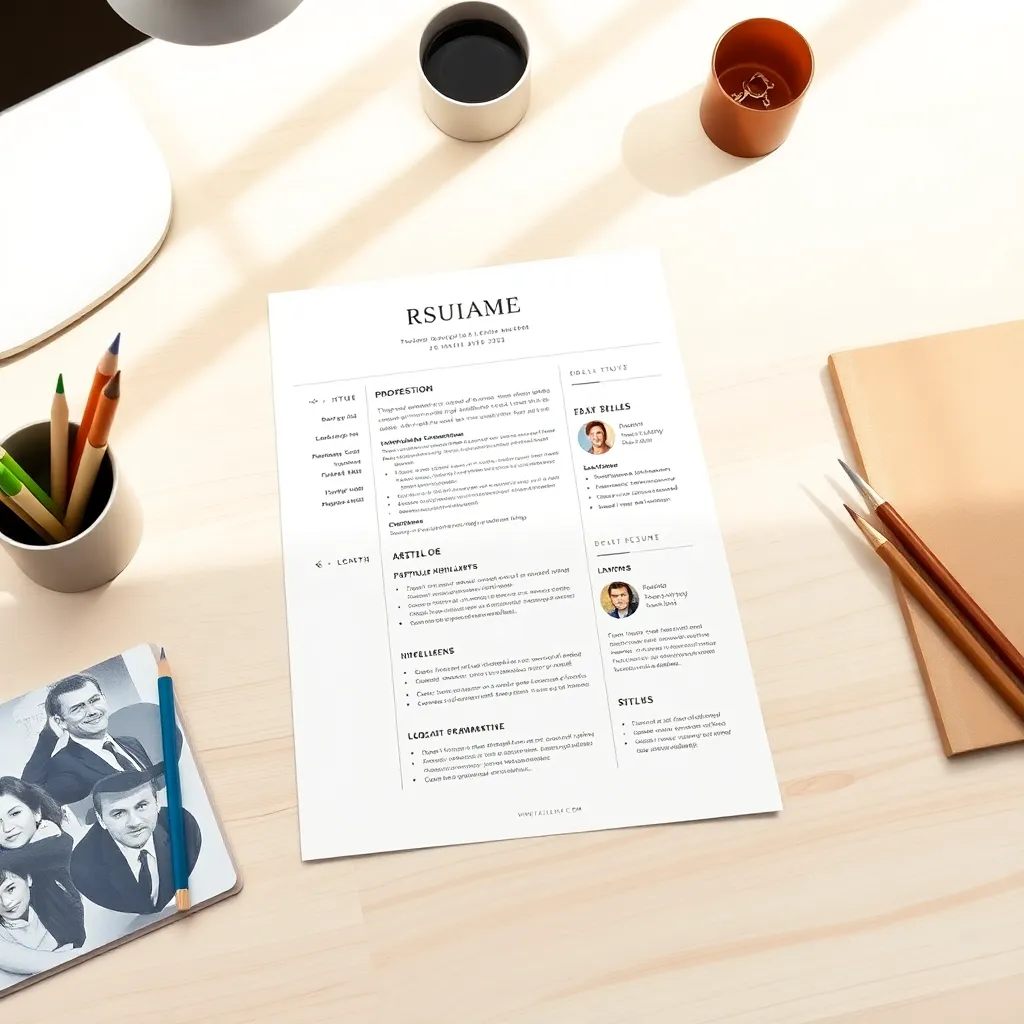When it comes to landing your dream job, the details matter—including how your resume looks on the page. While you might be focused on perfecting your job descriptions and achievements, the actual page setup of your resume plays a crucial role in whether it gets noticed or rejected. Let’s explore why proper page setup matters and how to optimize your resume margins for maximum impact.
Why Resume Page Setup Matters for Job Seekers
The way you format your resume isn’t just about aesthetics—it directly impacts your chances of getting an interview. Here’s why:
-
ATS Compatibility: Over 90% of Fortune 500 companies use Applicant Tracking Systems (ATS) to screen resumes before a human ever sees them. Improper formatting can cause your resume to be rejected regardless of your qualifications.
-
First Impressions: Recruiters spend an average of just 6-7 seconds scanning your resume initially. A clean, properly formatted document signals professionalism and attention to detail.
-
Readability: Poor margins or overcrowded text reduce readability for hiring managers, making it harder for them to quickly identify your qualifications.
-
Keyword Parsing: Improper page setup can disrupt how ATS systems parse critical keywords from your resume, potentially causing you to be filtered out of consideration.
Using an ATS friendly resume generator from resume can help ensure your document meets these technical requirements, but understanding the fundamentals yourself is equally important.
Optimal Resume Margin Settings for Professional Documents
For most professional resumes, follow these margin guidelines:
-
Standard Setting: 1-inch margins on all sides is the North American standard and works well for most situations.
-
Minimum Acceptable: Never go below 0.5-inch margins, as this causes text crowding that can be flagged by ATS systems.
-
Consistency Matters: If you have a multi-page resume, maintain consistent margins across all pages.
Margin Adjustments for Different Resume Formats
Different resume types may require slight adjustments:
-
Chronological Resumes: Standard 1-inch margins work perfectly for this traditional format.
-
Functional/Combination Resumes: These may require slightly reduced margins (0.75-inch) to accommodate skill groupings while maintaining readability.
-
Creative Field Resumes: Design professionals may have more flexibility, but remember that ATS systems still need to parse your information.
-
Executive Resumes: For senior positions with extensive experience, 0.7-0.8 inch margins may be appropriate to accommodate more content while maintaining a professional appearance.
Many job seekers wonder does ATS score matter when it comes to formatting. The answer is absolutely yes—improper margins can significantly reduce your ATS compatibility score.
Technical Guide to Setting Up Resume Page Parameters
Here’s how to properly set up your resume in common platforms:
Microsoft Word:
- Go to Layout > Margins > Custom Margins
- Set all margins to 1 inch (or your desired setting)
- Apply to the whole document
Google Docs:
- Use File > Page Setup
- Set margins to 1 inch
- Click “OK” to apply
- Avoid mobile editing, which can distort formatting
PDF Export:
- Save as “Standard PDF” (not “Print PDF”) to preserve ATS compatibility
- Always check the exported file to ensure formatting remains intact
Many job seekers also wonder do ATS systems like PDFs. Modern ATS can generally handle PDFs well, provided they’re properly formatted and not image-based.
For optimal results, also consider these critical settings:
- Font: Use ATS-friendly fonts like Arial or Calibri in 11-12pt size
- Alignment: Left-justify all text to prevent parsing errors
Balancing White Space for Maximum Resume Readability
Proper spacing is just as important as margins for creating a readable document:
- Line Spacing: Use 1.15-1.5 line spacing to improve scannability
- Section Breaks: Add 2-3 line spaces between headings
- Bullet Points: Limit to 5-7 per job role to prevent creating a “wall of text”
White space isn’t wasted space—it’s a strategic element that helps guide the reader’s eye and creates a visual hierarchy. Properly spaced content helps recruiters quickly find the information they need during that crucial 6-7 second initial scan.
Understanding how to beat hiring software through proper formatting can significantly increase your chances of getting past the initial screening.
Common Resume Page Setup Mistakes to Avoid
Watch out for these formatting pitfalls that could cost you interviews:
-
Headers and Footers: Many ATS systems ignore contact information placed in headers/footers. Keep all important details in the main body.
-
Multi-Column Layouts: These cause text scrambling in ATS systems. Stick to a single-column format for maximum compatibility.
-
Graphics and Icons: ATS cannot interpret embedded visuals. Use text-based formatting only.
-
Non-Standard Fonts: Script or decorative fonts reduce text extraction accuracy. Stick with standard sans-serif options.
-
Overcrowding: Cramming too much content by reducing margins below 0.5 inches makes your resume hard to read and signals poor judgment.
Knowing the best applicant tracking systems used by employers can help you understand what you’re up against and format accordingly.
Testing Your Resume Format Across Platforms
Before submitting your resume, verify its compatibility:
-
ATS Simulation: Use ResuFit‘s ATS-friendly resume analysis to check how your resume performs in actual ATS systems.
-
Cross-Platform Testing: Open your resume in different programs (Word, Google Docs) and on different devices to ensure consistent display.
-
Print Preview: Check how your resume will look if printed, as some employers still prefer physical copies.
-
Text Conversion Test: Export to a plain text (.txt) file—if content appears out of order, revise your formatting.
ResuFit offers specialized tools to check your resume’s ATS compatibility and provides actionable feedback on how to improve your formatting for better results.
Final Thoughts
The perfect resume page setup balances professional appearance with ATS compatibility. By maintaining proper margins (1-inch standard, 0.5-inch minimum), using appropriate spacing, and avoiding common formatting pitfalls, you’ll create a resume that not only looks professional but also makes it through the digital gatekeepers.
Remember that even small details like margin settings can make the difference between your resume being seen by hiring managers or being filtered out before human eyes ever see it. When every advantage counts in a competitive job market, proper page setup is an easy win that too many candidates overlook.
For more help creating an optimized resume, consider using ResuFit‘s tools, which automatically handle margin settings and other formatting requirements while ensuring your document remains ATS-friendly.




















